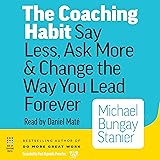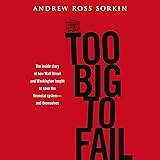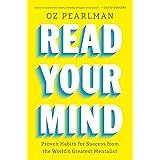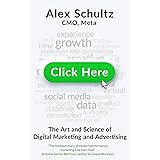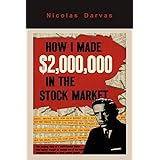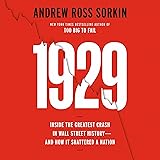The conversation surrounding gold as an investment asset is as old as finance itself. As highlighted in the accompanying video, gold’s status as both a commodity and a currency positions it uniquely within global markets. Its historical significance, combined with its tangible nature, often prompts serious investors to evaluate its role within a diversified portfolio. This exploration delves deeper into the multifaceted dynamics that define gold’s investment profile, examining its enduring appeal, its specific market functions, and the ongoing debate regarding its effectiveness as a strategic hedge.
Understanding Gold’s Dual Identity: Commodity and Currency
Gold’s intrinsic value and widespread acceptance trace back centuries. Suki Cooper astutely points out its unique dual nature: it operates simultaneously as a commodity and a currency. Investors, therefore, approach gold from varied perspectives. Some acquire it as a pure financial asset, a liquid instrument to manage risk or capitalize on market movements. Others, however, appreciate its physical manifestation in jewelry, blending aesthetic enjoyment with a time-honored method of wealth storage.
This duality underpins gold’s robust market presence. The global market for gold is remarkably active, demonstrating an average daily trading volume of $183 billion. This figure solidifies its position as one of the largest financial assets globally, reflecting broad participation from individual investors, institutions, and central banks alike. Its history of sustained relevance, as Jason Snipe notes, underscores its enduring power within the financial ecosystem.
The Evolution of Gold’s Value: A Historical Perspective
Gold’s price trajectory offers compelling data for investors. The early 2000s saw gold priced at a modest $460.88 per ounce when adjusted for inflation. Fast forward to August 2021, and that figure surged to approximately $1,815.50 per ounce. This substantial increase over two decades indicates a significant appreciation in dollar terms, a trend Suki Cooper specifically observes over the past decade.
Despite this growth, gold is not without its detractors. Warren Buffett, a revered figure in value investing, has consistently voiced skepticism, famously calling gold an “asset with no utility.” Ben Laidler elaborates on this critique, highlighting gold’s fundamental characteristic: it generates no income. Unlike stocks that pay dividends or bonds that offer coupons, gold sits passively, relying solely on price appreciation for returns. This lack of productive yield becomes a critical factor for investors focused on compounding returns over the long term.
Drivers of Gold Demand: Beyond Speculation
Gold’s inherent properties contribute to its consistent demand. It is renowned for its reliability, durability, and scarcity—qualities that render it precious. Its exceptional malleability, as Jason Snipe mentions, also makes it highly workable, facilitating a wider range of real-world applications compared to many other precious metals. This practical utility helps maintain a baseline demand that supports its market value.
Demand for gold broadly segments into several key areas. The jewelry sector traditionally consumes the largest share, reflecting its cultural and aesthetic value across diverse societies. Investment demand forms a significant, though more volatile, component, typically accounting for up to 30-40% of total consumption. The technology sector, while smaller, typically around 10% or less, also provides a consistent demand for gold due to its excellent conductivity and resistance to corrosion, vital for electronics and specialized industrial applications.
Central Banks: Strategic Gold Accumulators
Central banks and other financial institutions play an indispensable role in the demand equation for gold. Their significant holdings underscore gold’s function as a foundational reserve asset. In 2021, central banks collectively held over 35,000 metric tons of gold. This staggering figure represents approximately one-fifth of all the gold ever mined, demonstrating its strategic importance in national balance sheets. The International Monetary Fund (IMF), for instance, maintains a substantial holding of about 2,814 metric tons, valued around $158.5 billion.
This institutional appetite for gold has deep historical roots. Until the 1970s, major economies, including the United States, operated under a gold standard, linking their currencies directly to gold. This arrangement necessitated large gold reserves for central banks. While the gold standard is no longer in effect, central bank buying has seen a resurgence. In 2018 alone, central banks purchased over 650 tons of gold. These persistent acquisitions have propelled central bank gold holdings to their highest levels since 1999, signifying a renewed confidence in gold as a reserve asset.
Gold as a Hedging Instrument: Inflation and Market Volatility
Many investors allocate capital to gold for its perceived ability to diversify risk and preserve value over time. Suki Cooper notes that the inflation-adjusted value of gold today approaches levels seen in 2011 and even 1980. This suggests that gold has largely held its real value through decades, irrespective of whether the GDP deflator or US CPI is used for adjustment. This characteristic positions gold as a potential bulwark against currency debasement and inflationary pressures.
Historically, gold has shone during periods of high inflation. The Great Inflation of the 1970s serves as a classic example. From 1973 to 1979, as the US experienced severe inflation, gold delivered an impressive 35% return. This performance far outstripped other commodities during that turbulent period. Jason Snipe attributes this to gold’s inverse relationship with the dollar: as the dollar’s value erodes, gold often moves positively, retaining its value where other assets might falter.
Gold also tends to attract capital during periods of economic or financial crisis. Following the Great Recession, between 2008 and 2012, gold’s value escalated dramatically, surging from approximately $1,150 per ounce to around $1,974 per ounce (inflation-adjusted). Similarly, during the 2020 pandemic-induced recession, gold prices reached an all-time high of $2,021 per ounce overnight, settling above $2,000 for the first time in August 2021. Ben Laidler reinforces this pattern, observing that during the last five major market corrections (e.g., tech bubble, global financial crisis, COVID crash), the S&P 500 averaged a 28% decline, while gold typically averaged an 11% increase. Gold functions as a liquid asset, capable of meeting margin calls elsewhere while still retaining its value.
The Nuance of Gold’s Inflation Hedge Debate
Despite these historical examples, the effectiveness of gold as an inflation hedge remains a contentious topic among experts. Jason Snipe questions its efficacy as a primary hedge, suggesting equities might perform better in this role, while still acknowledging gold’s specific contributions. Recent analyses indicate that gold’s correlation to inflation has been relatively low, yielding mixed returns during various high-inflation periods. For instance, while gold excelled between 1973 and 1979, investors faced average losses of 10% from 1980 to 1984 (when inflation was 6.5%) and another 7.6% from 1988 to 1991 (with inflation around 4.6%).
Suki Cooper clarifies that gold’s hedging ability is context-dependent. It proves effective against systemic risks—broad, market-wide threats—but less so against country-specific or localized risks. Its role in a portfolio has faced scrutiny over the past five years. She emphasizes that gold serves as a strategic rather than a perfect inflation hedge. Studies suggest that if gold is held for an extended period, perhaps 12 to 18 months before inflation accelerates, and then for an additional 12 to 18 months as inflation rises, it can indeed be a potent hedge. However, short-term purchases for just a month may not yield the desired protective effect.
Performance Comparison and Long-Term Yields
When evaluated against other asset classes over the long term, gold presents a different picture. Since 2011, the S&P 500 has delivered an impressive annualized return of 14.55%. Over the same decade, a 10-year Treasury note yielded an annualized return of 2.57%. In contrast, gold’s 10-year annualized return was negative, sitting at -0.05%. This data highlights gold’s limitation as a growth asset compared to equities and even fixed income instruments over sustained periods.
Jason Snipe expresses concern about gold’s long-term yield. While it performs well during macro and exogenous events like the COVID-19 pandemic or geopolitical issues, its performance tends to normalize in a more stable economic environment. This aligns with Warren Buffett’s philosophy, who sees gold as an unproductive asset lacking dividends or interest. Even Buffett’s brief foray into a gold mining company in August 2020, purchasing $562 million in shares, was swiftly reversed by the end of the year, reaffirming his investment stance. For investors seeking long-term yields, a small allocation to gold for portfolio management might be prudent, but heavy entrenchment is generally not recommended.
The Evolving Landscape: Gold Amidst New Competitors
The rise of alternative assets like cryptocurrencies and silver introduces new considerations for gold’s status. Cryptocurrencies, particularly Bitcoin, are increasingly discussed as potential “digital gold,” a new store of value in the digital age. Jason Snipe acknowledges this evolving conversation but does not view it as direct competition in the long run. He posits that both asset classes can coexist and develop within the market, offering different value propositions to investors.
Silver, another precious metal, also challenges gold, particularly for investors seeking broader commodity exposure and industrial applications. Suki Cooper suggests that investors prioritizing macro exposure and a commodity known for industrial usage might prefer silver. However, those focused purely on macro environmental exposure tend to favor gold. Ultimately, gold’s historical influence and distinct market role are unlikely to dissipate soon.
Ben Laidler’s advice resonates: while bull markets do not last indefinitely, maintaining exposure to “rainy day assets” like gold remains important. The question for investors is not whether to hold gold, but rather the appropriate allocation size. Looking ahead, Suki Cooper anticipates that gold prices will remain elevated compared to levels seen over the past five to ten years. While a near-term upside risk exists, she suggests a potential trend lower towards the end of the following year, followed by another possible move higher. This outlook underscores gold’s inherent volatility and the necessity for strategic positioning when investing in gold.


